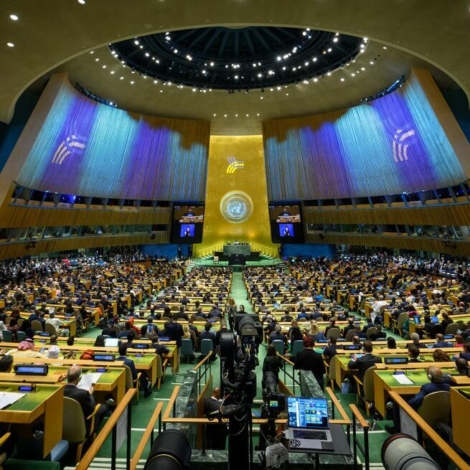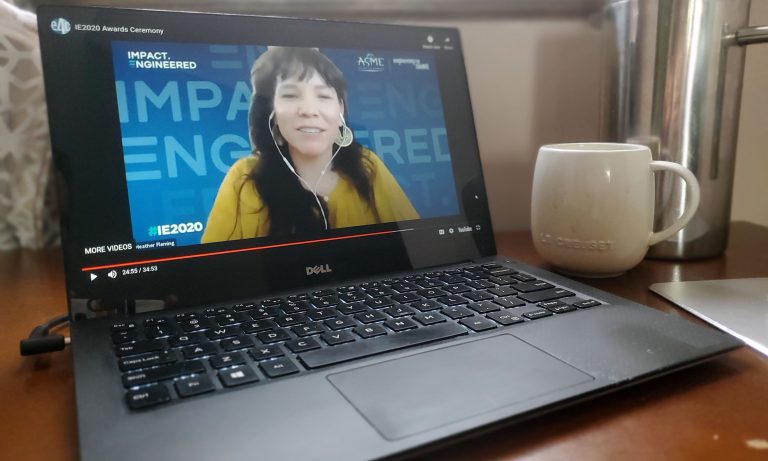“The Pact for the Future is about turbocharging the Sustainable Development Goals and the Paris Agreement, accelerating a just transition away from fossil fuels, and securing a peaceful and livable future for everyone on our planet,” UN Secretary General António Guterres said at the opening of the Summit of the Future Plenary.
“Engineers who are trained in global development and the workings of international organizations, in addition to their technical training, will be uniquely positioned to become the carriers of professional knowledge across countries and continents.” – Dr. Yael Perez, Director of DevEng Programs at Blum Center for Developing Economies, University of California, Berkeley
“Given the current global challenges—ranging from environmental crises and climate disasters to conflicts—the reality on Earth is evolving faster than many institutions can respond. In an effort to address these urgent issues, the UN, through its Pact for the Future, is working to realign its priorities with the changing global landscape, with the hope of shaping a more sustainable and equitable future. Other institutions and professional organizations must act quickly to align with these priorities and allocate funding and resources to turn them into actionable realities,” Dr. Perez says.
“I looked at Article III, and was hoping to see a detailed statement about promoting women and girls in STEM field , but the statement indicates gender equality,” Professor Catherine Ngila, Executive Director of the African Foundation for Women & Youth in Education & STI ih Nairobi, Kenya, told E4C.
For reference:
Article III. Science, technology and innovation and digital cooperation (pg. 21)
Action 28. We will seize the opportunities presented by science, technology and innovation for the benefit of people and planet. (pg. 22)
Action 29. We will scale up the means of implementation to developing countries to strengthen their science, technology and innovation capacities.(pg. 22)
Action 30. We will ensure that science, technology and innovation contribute to the full enjoyment of human rights by all. (pg. 23)
Action 31. We will ensure that science, technology and innovation improve gender equality and the lives of all women and girls. (pg. 24)
Action 32. We will protect, build on and complement Indigenous, traditional and local knowledge. (pg. 24)
Action 33. We will support the Secretary-General to strengthen the role of the United Nations in supporting international cooperation in science, technology and innovation. (pg. 24)
The pact includes an article on youth and future generations (Article IV), but nothing specific to women and girls, Dr. Ngila says.
“I expected to see the document with a dedicated Article on Women & Girls in Science, how to ensure we achieve a higher percentage of women and girls in science?. Currently, we have less than 30% of women in science. What commitment can the member states make to ensure we reach 50%, with Actions clearly spelled out.
Further, she says, Action 8 is too general. Action 8: “We will achieve gender equality and the empowerment of all women and girls as a crucial contribution to progress across all the Sustainable Development Goals and targets.
“It refers to all SDGs. I am more keen on women and girls in science,” Dr. Ngila says.
“Engineers play an incredible role in shaping the future through two critical areas of the Pact for the Future: promoting equitable technology access and safeguarding against the weaponization of AI,” – Carolina Rojas at Engineering for Change.
“As highlighted in the Global Digital Compact, engineers are called to create affordable and adaptable technologies that bridge digital divides and uplift underserved communities. Furthermore, the Pact’s commitment to preventing AI weaponization emphasizes the importance of designing responsible systems with transparency and strong ethical safeguards. The call for responsible system design allows engineers to pioneer advancements that emphasize the values of peace and inclusivity,” Ms. Rojas says.
“The Global Digital Compact recognizes that the strength and speed of emerging technologies are at the source of both tremendous opportunities and troubling challenges and thus require ‘human oversight of technology in ways that advance sustainable development and the full enjoyment of human rights,'” – Ayman Cherkaoui IUCN WCEL Deputy Chair
Mr. Cherkaoui draws out two priniciples in the Compact: “digital technologies unlock new capabilities and opportunities for advancing environmental sustainability,” and the Compact should “leverage digital technologies for sustainability while minimizing their negative environmental impacts.” Those principles should be linked to three actions in the Global Digital Compact, he says.
- Promote sustainability across the life cycle of digital technologies
- Strengthen efforts to collect, analyze and disseminate relevant, accurate, reliable and disaggregated data for better monitoring and policymaking to accelerate the achievement of the 2030 Agenda
- We recognize the immense potential of artificial intelligence systems to accelerate progress across all the Sustainable Development Goals. We will govern artificial intelligence in the public interest and ensure that the application of artificial intelligence fosters diverse cultures and languages and supports locally generated data for the benefit of countries and communities’ development.

